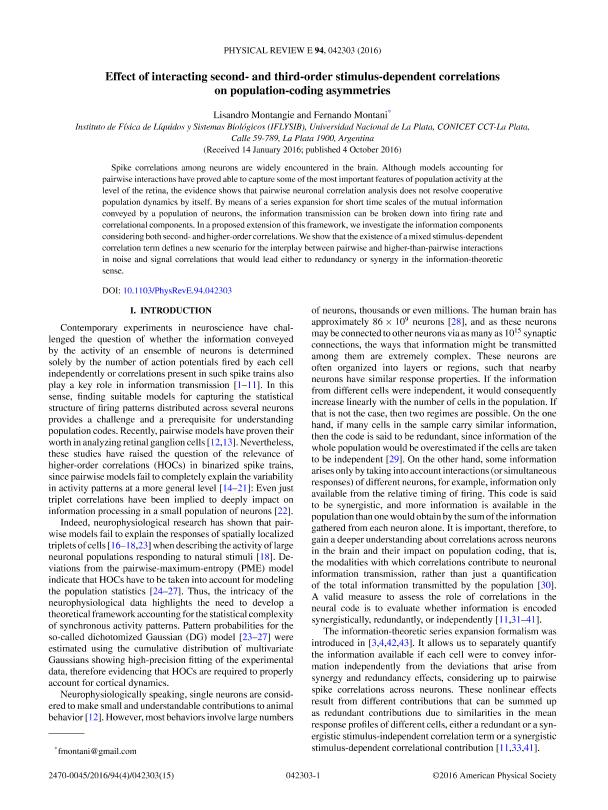Artículo
Effect of interacting second- and third-order stimulus-dependent correlations on population-coding asymmetries
Fecha de publicación:
10/2016
Editorial:
American Physical Society
Revista:
Physical Review E
ISSN:
2470-0053
Idioma:
Inglés
Tipo de recurso:
Artículo publicado
Clasificación temática:
Resumen
Spike correlations among neurons are widely encountered in the brain. Although models accounting for pairwise interactions have proved able to capture some of the most important features of population activity at the level of the retina, the evidence shows that pairwise neuronal correlation analysis does not resolve cooperative population dynamics by itself. By means of a series expansion for short time scales of the mutual information conveyed by a population of neurons, the information transmission can be broken down into firing rate and correlational components. In a proposed extension of this framework, we investigate the information components considering both second- and higher-order correlations. We show that the existence of a mixed stimulus-dependent correlation term defines a new scenario for the interplay between pairwise and higher-than-pairwise interactions in noise and signal correlations that would lead either to redundancy or synergy in the information-theoretic sense.
Archivos asociados
Licencia
Identificadores
Colecciones
Articulos(IFLYSIB)
Articulos de INST.FISICA DE LIQUIDOS Y SIST.BIOLOGICOS (I)
Articulos de INST.FISICA DE LIQUIDOS Y SIST.BIOLOGICOS (I)
Citación
Montangie, Lisandro; Montani, Fernando Fabián; Effect of interacting second- and third-order stimulus-dependent correlations on population-coding asymmetries; American Physical Society; Physical Review E; 94; 4; 10-2016; 1-15; 042303
Compartir
Altmétricas




